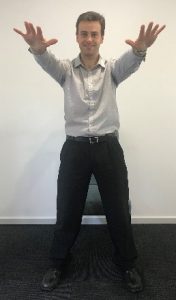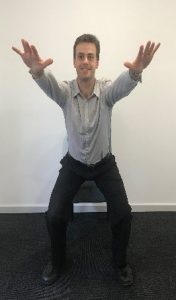STRENGTHENING EXERCISES AND AGEING – WHAT’S THE BOTHER?
In Australia, 54% of women and 51% of men aged between 18 and 64 were considered physically inactive or insufficiently active. Physical inactivity increased to 65% in those aged 65 and above.
Commonly, Australians are aware they need to perform “30 minutes of moderate physical activity per day”. However, many people are unaware that the physical activity guidelines include the recommendation for adults aged 18 to 64 to perform muscle strengthening exercises twice per week. For those over the age of 65 it’s recommended to “incorporate muscle strengthening activities” throughout the week (research has shown 2-3 times per week can have a positive effect).
Only 19% of those aged 55-64 completed strength-based activities at least 2 days per week. 16% of women aged 65 to 74 and 13% of males in this age group completed 2 days of strength-based exercise.
What Do We Know About Muscle and Aging?
- Muscle mass (the volume of muscle we have) decreases by approximately 1% per year
- Muscle strength (how much force we can produce) decreases by approximately 2-4% per year
- Muscle power (how quickly we can produce force) decreases by approximately 2.5-3% per year
So ‘Who Cares’ If We Lose Muscle As We Age? What Difference Does It Make Anyway?
A loss of muscle is particularly concerning as we know that it plays an important role in;
- Movement
- Balance
- Metabolism
- Resisting disease and infection
- Independence
- Quality of Life
As we age we lose muscle mass, strength and power and this can have a direct effect on our ability to move (e.g. getting up from a chair, walking around the shops, playing lawn bowls). As muscle loss increases and our ability to perform activities decrease; this can result in poorer quality of life as we can find it more difficult to do the things we want or need to do. Sadly, declines in muscle health have also been associated with premature death in older adults.
Well That All Sounds Pretty Negative, Any Positive News?
Despite the reality of aging having a negative impact on our muscle health; there is good news! Strengthening exercises have “enormous potential to improve the experience of aging and reduce the incidence of age-related conditions that deteriorate quality of life”. Strengthening exercises is the most widely recognised strategy to combat age-related muscle wasting as well as improving overall muscle health.
It can greatly improve: 1) muscle mass, 2) neuromuscular performance (our nerves aren’t required to ‘work as hard’ in sending messages to activate the muscles), 3) our muscle cells change (‘transform’) positively.
An 8-12 week period (of moderate to high intensity) strength training in older adults was shown to improve leg and upper body muscle strength by 25-35%!
Where Should I Start?
As per the Australian guidelines; adults should aim to perform strengthening exercises twice per week and those above the age of 65 to incorporate it regularly throughout their week (aim for at least twice per week). Like any new activity, be realistic about what you can achieve. If motivation to exercise is low; consider 1 simple exercise that you can perform at a place of enjoyment (e.g. during the ad break when watching television).
Below is one example of a strengthening exercise that you could start with. A ‘Sit to Stand’ has been shown to have good effect in increasing thigh muscle strength and directly translates to standing from a chair, standing up from the toilet or standing up after releasing when playing lawn bowls.
Sit to Stand


Any further questions about a strengthening exercise program, or injury; please feel free to contact me on 0455 671 384 or email luke@continuumphysiotherapy.com.au
Luke Dowse (Physiotherapist)


